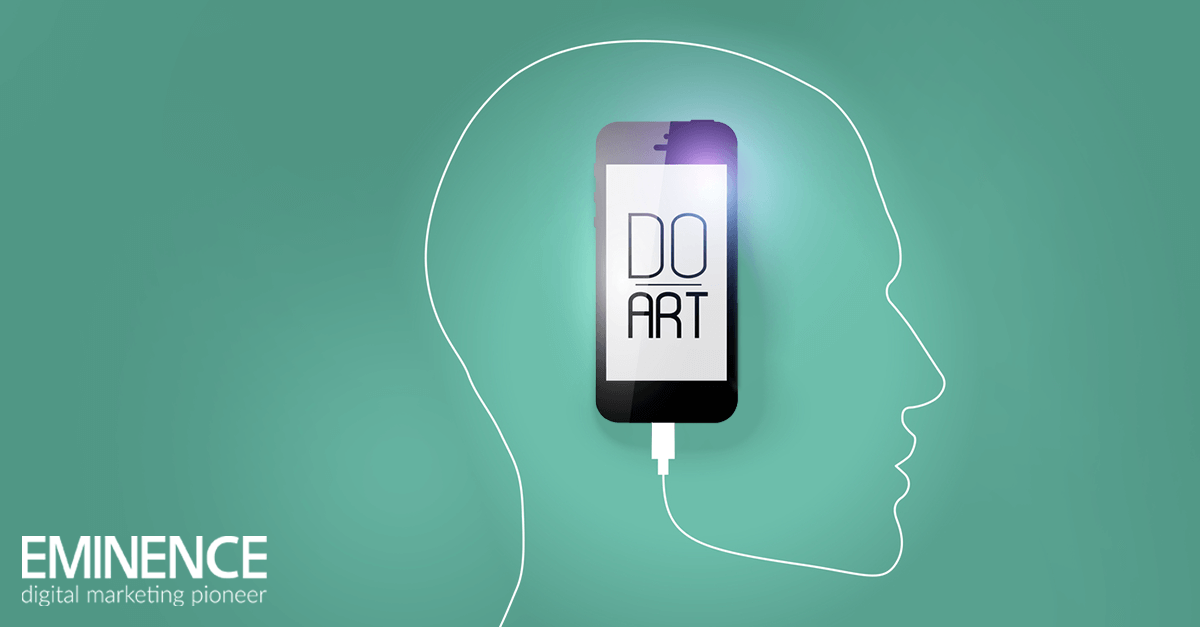Mobile has completely transformed the way we consume. Whether it’s goods, services, but also content: square videos, vertical videos, less text, more images. Indeed, the rules of creativity have changed with the mobile and this is why Eminence shares its knowledge with you.
The importance of creativity for advertisers
With Facebook, opportunities are literally at hand. It’s time for advertisers, strategists and creators to unleash their creativity and test more on mobile to interact with their audience.
– Interact with people where they are
Did you know that people can very easily remember mobile news feed content after viewing it for just 0.25 seconds? Therefore, it is important to interact with people at the right time and in the right place in order to get their attention. In addition, mobile content consumption is dynamic.
– Find inspiration
Rethink your narrative by taking advantage of the data at your disposal and unleash your creativity to create more relevant and engaging proposals. Mobile also allows you to present your content in different forms. Mix your different sources and let your creativity guide you.
– Experience more
By experimenting with new ad formats and content types, testing new approaches and, most importantly, putting mobile at the heart of your strategies, you can find new and more effective ways to get people to stop, look, experience, share, respond and buy. This will help you achieve your long-term business goals.
The impact of creativity on advertising campaigns:
Attractive advertising content generates long-term business growth. By leveraging creativity, you can develop bolder campaigns that speak to your audience, reduce creative risk and increase impact through deliberate testing of content.
– Betatyping:
Developed by the Creative Shop and Facebook’s science marketing teams, Betatyping allows for deliberate testing, discovering fertile creative areas and fostering success. In other words, Betatyping provides a framework for advertising content and allows advertisers to answer the most pressing business questions by putting themselves directly in the shoes of their Facebook audiences.
This approach to betatyping not only offers long-term benefits, but also has a direct impact on the effectiveness of multimedia content: thanks to a meta-analysis based on tests of advertising content on Facebook platforms, we found that the winning elements obtained through a testing and learning process significantly reduced the average cost per ad recall, the cost per action intention and the cost per action, compared to other elements.
The different stages of Betatyping are as follows:
- Ask: make assumptions about what you want to learn and identify the indicators that will determine success.
- Create: design tests and creative elements based on your hypothesis and what you want to learn.
- Learn: Analyze test results and information based on primary indicators and secondary diagnostics.
- Adapt: Strategically and creatively determine how to implement what you have learned.
The Powerful Combination of Art and Science through Betatyping
Betatyping allows you to test the advertising content of Facebook platforms. It combines real-time results (the science) with creative expertise (the art) and provides insights on how to best seize this opportunity.
Creating purchase intent with creative content
At a time when the production of new advertising is a real challenge, branded content can be an interesting option for creators and publishers.
In order to create intent to buy, marketing teams can use a mixed approach, i.e. combining classic ads with branded content from creators and publishers. This strategy is based on a new Facebook Marketing Science meta-analysis of 26 studies of consumer goods advertisers across several product sub-categories, world regions and ad formats, such as static images or video.
The effects of a blended approach on purchase intent:
Combining branded content and traditional branded ads in the same campaign on Facebook and Instagram generated intent to purchase at an average 82% lower cost than using either of these two solutions alone.
The persuasive power of branded content
Analysis of the FMCG sector shows that creator and publisher content, when combined with consumer trust in a brand, can generate engagement, visits and purchase behaviour.
A study of fashion buyers in the United States found that designers can have a huge influence on buying intentions. Nearly one-third of these buyers follow an influencer to find out what they think about certain products, and about two out of five said they subscribe to an influencer to keep abreast of the latest trends.

